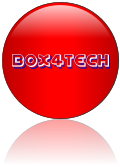I had a chance to have a great conversation with Richard Churchill, Vice President of Sales for Europe. Given that we have been working with High Frequency Trading (HFT) customers recently I asked Richard what three things he would tell a technologist new to HFT were the three most important things to consider. He replied:
Speed, Integrity and Security
This is the year 10GBit Ethernet becomes pervasive
 Finally, I asked Richard for a prediction for HFT:
Finally, I asked Richard for a prediction for HFT:
Not much of prediction but an acceptance that all trading will be done this way. I don't see banks investing in new trading floors but exchanges are building ever larger data centres to house their customers' computers.
Speed, Integrity and Security
- Speed is the most important thing to consider. Getting the market data, matching orders and placing bid/offers into the market in less than a millisecond takes a great deal of technological skill. Keeping the thousands of trade events in flight without busting the operational limit is so important that if the pre-trade and matching have taken too long the algorithm may as well drop the trade and save the exchange fee for placing an order that will not be fulfilled.
- This is still trading and trading in regulated financial markets so all the pre-trade risk and post trade position keeping processing still has to be done. A small firm might offload that to a third party but larger institutions will still want to process in house. In either case, the infrastructure will need to be robust enough to survive an audit.
- Security, in all its guises, from making sure the operating system is hardened against hacking to testing the trading algorithms to prevent a flash crash incident. Testing falls into this requirement and that means accurate measurement and timekeeping. The need for speed is important but maintaining the integrity of the infrastructure during trading storms is just as important.
This is the year 10GBit Ethernet becomes pervasive
- Enabling precision time protocol (PTP) in silicon on the network card will enable better time stamping and process integrity.
- The new generation of switch ASICs (Application Specific Integrated Circuit) that is making low latency 10GBit Ethernet pervasive. This year will see a general upgrade from 1GbitE to 10GbitE. By the end of the year servers will be delivered with 10GbitE ports as standard. The subsequent aggregation at exchanges will cause them to behave more like ISPs (Internet Service Providers)
- The insatiable demand for more and faster storage both of quantitative trading and regulatory requirements is going to see a move away from traditional monolithic solutions to more mesh based designs. Parallel file systems used in the high performance computing (HPC) environment will find their way into the financial sector.
 Finally, I asked Richard for a prediction for HFT:
Finally, I asked Richard for a prediction for HFT:Not much of prediction but an acceptance that all trading will be done this way. I don't see banks investing in new trading floors but exchanges are building ever larger data centres to house their customers' computers.
| Article Source: http://EzineArticles.com/?expert=David_Quarrell | |




No comments:
Post a Comment